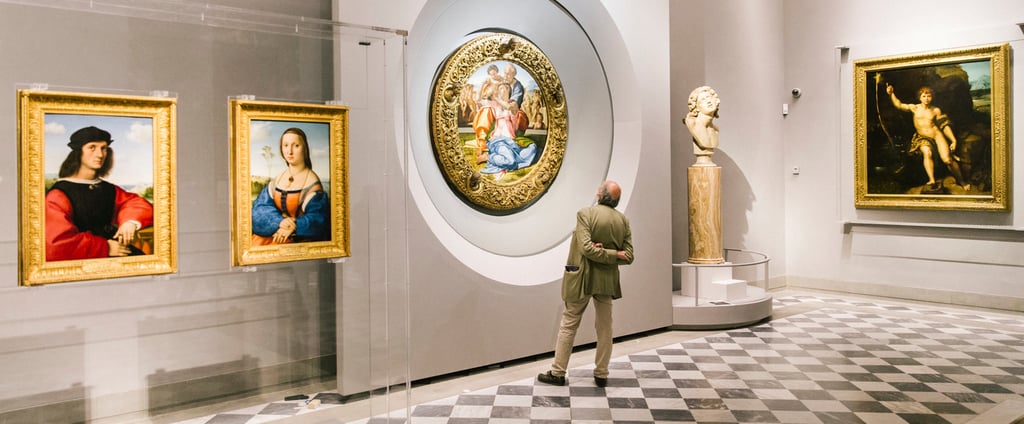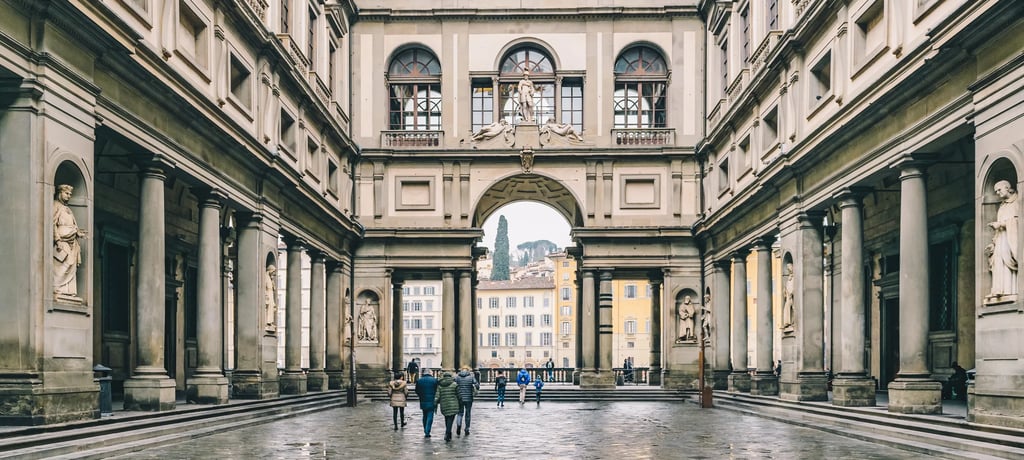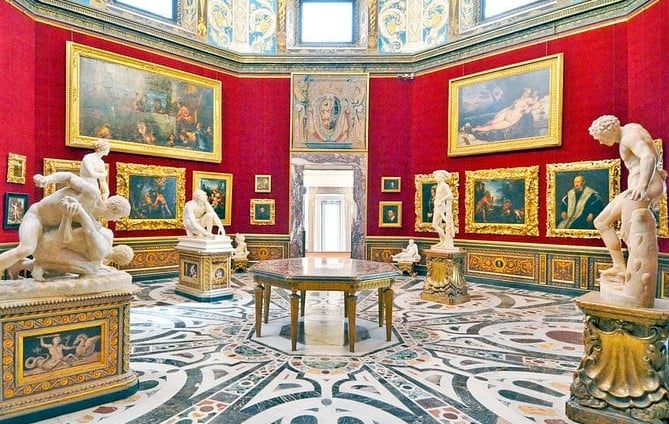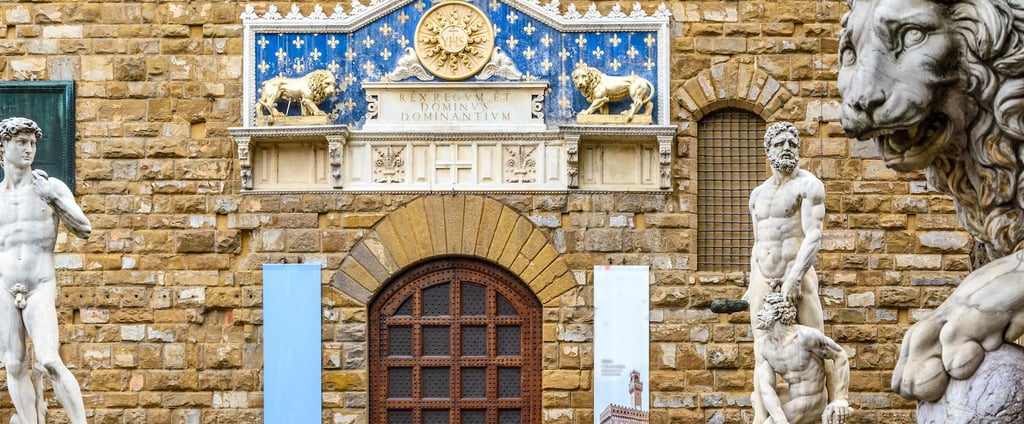Uffizi Gallery – Florence: A Journey into the Heart of Renaissance Art
Step inside one of the world’s most extraordinary art museums, where masterpieces by Botticelli, Michelangelo, Leonardo, and Caravaggio unfold across a palace of light, power, and history.


A Temple of Beauty in the Cradle of the Renaissance
The Uffizi Gallery, or Galleria degli Uffizi, is not just a museum—it is a cultural beacon that radiates across centuries. Situated in the historic center of Florence, the Uffizi represents the apex of Italian Renaissance art and stands as one of the most visited and revered art museums in the world. Its name echoes through art history like a hymn, evoking the grandeur of Botticelli’s “The Birth of Venus,” the mystery of Leonardo’s portraits, and the dramatic chiaroscuro of Caravaggio’s masterpieces.
Designed by Giorgio Vasari in the 16th century as administrative offices ("uffizi" meaning "offices") for the powerful Medici family, the building itself is steeped in political and artistic legacy. The structure, with its elegant Renaissance symmetry and arcaded corridors, forms a U-shape along the Arno River, culminating in the majestic Loggia dei Lanzi. The moment one steps inside the Uffizi, they step into a narrative of ambition, innovation, and artistic transcendence.
The Medici Legacy and the Birth of a Museum
The Uffizi owes its very existence to the Medici, the dynastic banking family that transformed Florence into a nucleus of cultural splendor during the Renaissance. Grand Duke Francesco I de’ Medici commissioned Vasari to design the building in 1560, initially as a central space to house the magistrates and guild offices of Florence. But from the very beginning, the Medici also used parts of the upper floors to showcase their private art collections, offering glimpses into their vision of artistic and intellectual supremacy.
In 1581, the Uffizi began evolving from government building to cultural sanctuary. Over the following centuries, the Medici collection expanded to include ancient Roman statues, scientific instruments, and—most notably—a burgeoning trove of paintings that would become the museum’s crowning glory.
When the last Medici heiress, Anna Maria Luisa de’ Medici, died in 1743, she bequeathed the family’s entire artistic inheritance to the city of Florence. Her will ensured that the artworks would remain public property, “for the ornament of the state, for the utility of the public and to attract the curiosity of foreigners.” Her foresight transformed the Uffizi into one of the earliest modern public museums, officially opening its doors to visitors in 1765.
Practical Information for Visitors
The Uffizi Gallery is located on Piazzale degli Uffizi, just a short walk from Florence’s main attractions, including the Piazza della Signoria, the Ponte Vecchio, and the Cathedral of Santa Maria del Fiore.
The museum is open from Tuesday to Sunday, with hours typically ranging from 8:15 AM to 6:30 PM. It is closed on Mondays and select holidays. Due to its immense popularity, it is strongly recommended to book tickets in advance, either online or through authorized vendors. Skip-the-line tickets and guided tours are also available and can greatly enhance the experience, especially during high season.
Admission includes access to the main galleries, as well as temporary exhibitions, which rotate regularly. Discounts are offered for EU citizens under 26, and children under 18 often enjoy free admission. The museum is wheelchair accessible and provides services for visitors with limited mobility or visual impairments.
Amenities include a cloakroom, museum shop, and a panoramic café on the upper level offering views over the Arno River and Palazzo Vecchio. Audio guides and mobile apps are available in multiple languages, and guided tours—both in-person and virtual—can be arranged through the museum’s website or affiliated organizations.
For those seeking deeper engagement, the Uffizi also offers lectures, children’s activities, research opportunities, and partnerships with global institutions, ensuring that each visit can be as enriching as it is awe-inspiring.
Visit the official website here: https://www.uffizi.it
The Vasari Corridor: A Hidden Jewel
One of the Uffizi’s most fascinating secrets is the Vasari Corridor—a kilometer-long passage that connects the Uffizi to the Pitti Palace across the Arno River. Designed by Giorgio Vasari in 1565 for Cosimo I de’ Medici, the corridor allowed the Grand Dukes to move privately between their residence and government without having to mingle with the public.
Inside this elevated hallway are hundreds of self-portraits by artists from the Renaissance to the present, including works by Rembrandt, Delacroix, and Chagall. Although the corridor has been closed for restoration in recent years, it remains a symbol of the Medici’s grandeur and the Uffizi’s unique ability to blend politics, architecture, and art into a living narrative.
Engagement Through Innovation
While deeply anchored in history, the Uffizi is far from static. Under the direction of recent leadership, the museum has embraced digital platforms, educational outreach, and curatorial innovation. Its social media presence has brought Renaissance art to new generations, using humor, storytelling, and interactive campaigns to revitalize the appeal of classical art.
The Uffizi has also collaborated with scholars and universities for research initiatives, conservation projects, and exhibitions that reframe old masterpieces in new contexts. One such effort explored the influence of Islamic art on Renaissance Florence; another re-examined the role of women artists in the Medici collection.
In recent years, satellite initiatives like the “Uffizi Diffusi” project have extended the museum’s reach to towns across Tuscany, democratizing access to culture by displaying Uffizi artworks in regional museums and public buildings. It’s a powerful reminder that the Renaissance, while born in Florence, belongs to everyone.




Masterpieces That Defined an Era
The Uffizi Gallery’s collection is vast, encyclopedic, and yet astonishingly personal. It offers not just an array of artworks but an intimate encounter with the soul of the Renaissance.
Among the undisputed highlights is Sandro Botticelli’s “The Birth of Venus,” a painting whose ethereal beauty and mythological subject matter continue to enchant audiences centuries after its creation. Botticelli’s other masterpiece, “Primavera,” graces a nearby room, offering a lush and symbolic celebration of love, nature, and fertility.
Another jewel is Leonardo da Vinci’s “Annunciation,” an early work that already hints at the mathematical precision and psychological depth that would come to define his legacy. Alongside Leonardo’s pieces are the sharp, introspective portraits of Raphael, whose ability to capture grace in simplicity earned him a reputation as the Renaissance’s “divine painter.”
One of the museum’s most emotionally charged experiences is found in Caravaggio’s works. His “Medusa,” painted on a ceremonial shield, arrests the viewer with its raw intensity. Nearby hangs “Bacchus,” a portrait of the god of wine rendered with such realism that the flesh seems almost to breathe. Caravaggio’s dramatic use of light and dark, known as tenebrism, marked a violent rupture from classical serenity and helped usher in the Baroque era.
Titian, Michelangelo, Giotto, Cimabue, Filippo Lippi, Piero della Francesca, and Parmigianino also grace the galleries with works that not only shaped Italian art but reshaped how the Western world understands the human form, divine beauty, and artistic expression.
Architectural Flow and Spatial Experience
The Uffizi is arranged over a series of long corridors, grand halls, and smaller chambers that guide visitors chronologically and thematically through the evolution of Western art. The upper-level corridors are lined with ancient Roman statues—noble busts, emperors, deities—watching silently as visitors move from one room to the next.
The experience is punctuated by large windows that offer spectacular views of Florence—the dome of the Duomo, the Ponte Vecchio, and the rolling hills of Tuscany beyond. These moments of openness amid the density of art provide both literal and metaphorical breath, linking the intellectual vigor of the interior with the poetic landscape of the city.
Recent renovations have expanded the museum space and improved circulation, allowing for more artworks to be displayed while enhancing the visitor’s journey. Climate control systems, improved lighting, and reimagined exhibition designs now make the Uffizi not only a house of treasures but a refined experience of art appreciation.








